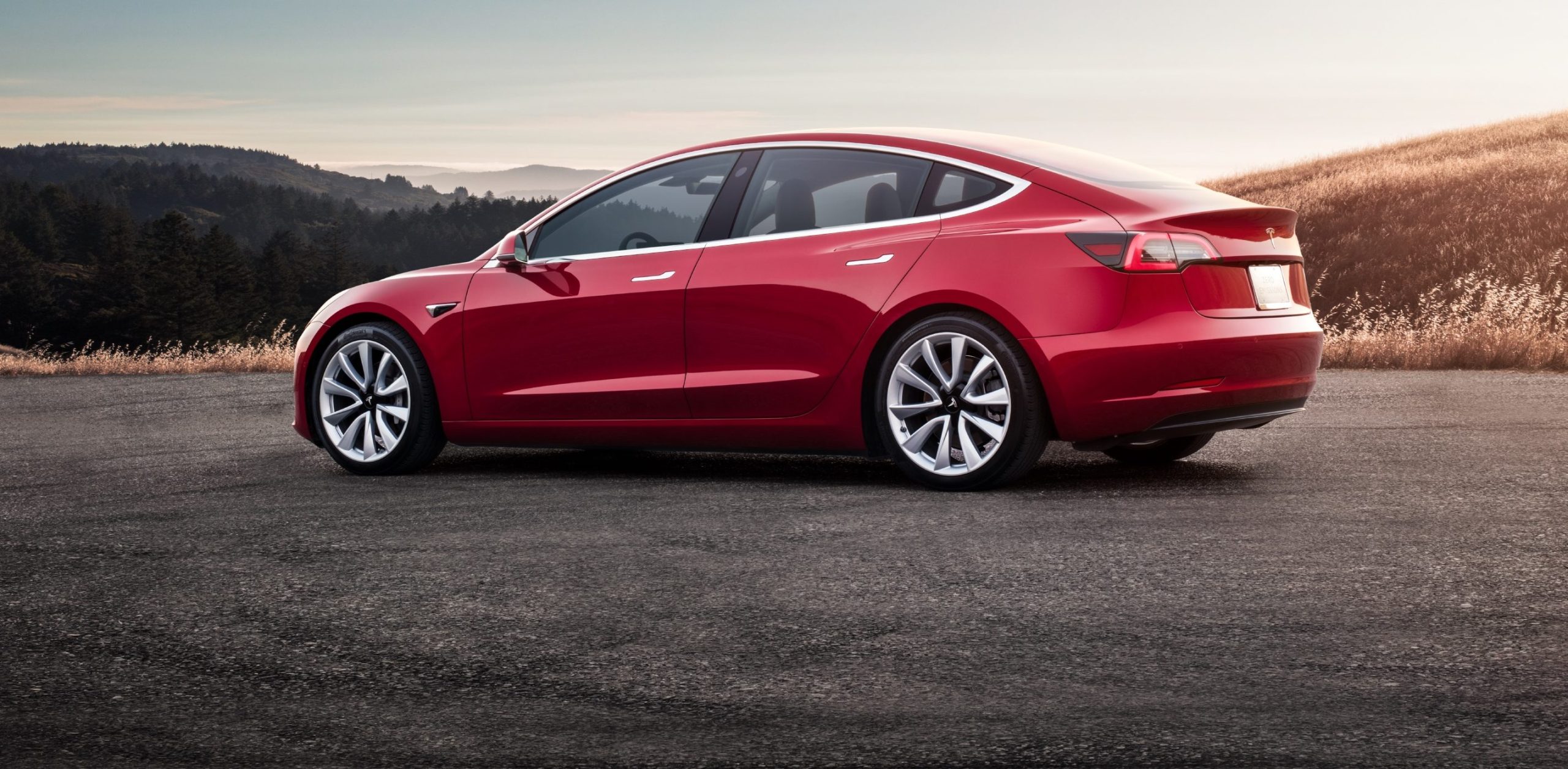
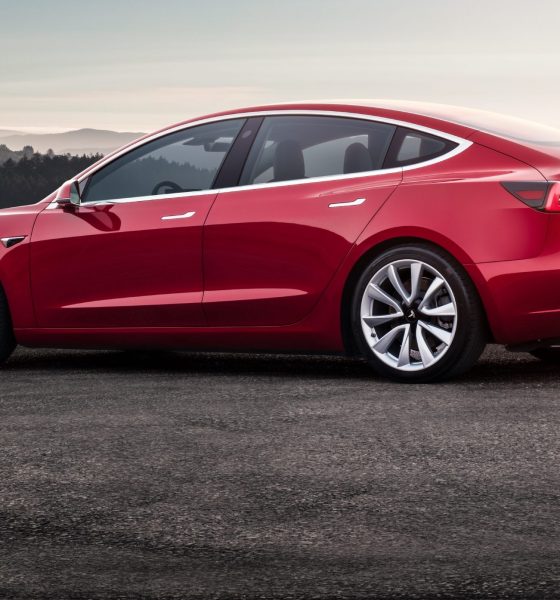
Tesla Model 3
Tesla’s $35k Model 3 is here: 220-mile range, new interior options
The $35,000 Model 3 is here. Interested buyers can now order the $35,000 Model 3 with a standard interior and a 220-mile battery. The company is also rolling out a new “partial premium interior” with upgraded seat material and trim, as well as an upgraded audio system, for an additional $2,000.
The Standard Range Model 3 was unveiled after Tesla temporarily paused its ordering page for its electric cars. In the hour leading up to the $35,000 Model 3’s release, visitors to Tesla’s site were redirected to www.tesla.com/soon and a page that simply reads, “The wait is almost over. Great things are launching at 2pm.” Once the order page was accessible, it became evident that Tesla was now offering two new variants of the electric car. The Long Range RWD version, the first configuration of the vehicle that was rolled out to consumers, also made a comeback.
As could be seen in the vehicle’s online configurator page, the Standard Model 3 is capable of traveling 220 miles on a single charge. In true Tesla fashion, the Standard Model 3 is no slouch, as it is capable of going from 0-60 mph in 5.6 seconds or comparable to a BMW 3 Series. The vehicle also has a top speed of 130 mph.

Tesla has also released the Model 3 Standard Range Plus, which is capable of going 240 miles per charge. The Standard Range Plus is faster than the $35,000 variant too, with its 0-60 mph time of 5.3 seconds and its 140 mph top speed. In a blog post announcing the release of the Model 3’s new variants, Tesla notes that with the Standard Range Plus, customers “get 9% more range, more power, and an upgraded interior.” Buyers looking for maximum range capabilities will be able to purchase a Long Range Model 3 which will receive a range boost through a number of over-the-air firmware updates.
Tesla has released details of the Model 3’s Standard Interior and its new Partial Premium Interior.
Standard Interior Includes:
- Manual seat and steering adjustment
- Cloth seats and base trim
- Basic audio
- Standard maps and navigation
- Center console with storage and 4 USB ports
Partial Premium Interior Includes:
- 12-way power adjustable heated front seats
- Premium seat material and trim
- Upgraded audio – immersive sound
- Standard maps & navigation
- LED fog lamps
- Center console with storage, 4 USB ports and docking for 2 smartphones
Premium Interior Includes:
- 12-way power adjustable front and rear heated seats
- Premium audio – 14 speakers, 1 subwoofer, 2 amps, and immersive sound
- Satellite-view maps with live traffic visualization and navigation
- In-car internet streaming music & media
- Internet browser
- Location-aware automatic garage door opener
- LED fog lamps
- Center console with storage, 4 USB ports and docking for 2 smartphones (edited)
Together with the Standard and Standard Plus variants, Tesla has also updated its vehicles’ Autopilot package. As of today, Tesla will be offering basic Autopilot, which has Autosteer and Traffic Aware Cruise Control, as a $3,000 add-on ($4,000 when purchased after delivery). Some features of Enhanced Autopilot, such as Navigate on Autopilot, Autopark, and Summon, are now included Tesla’s Full Self Driving Capability add-on, which costs $5,000 ($7,000 if purchased after delivery).
Echoing Elon Musk’s hints at his recent appearance at ARK Invest’s For Your Innovation podcast, Tesla has noted in its FSD add-on page that other features, such as the ability to recognize and respond to traffic lights and stop signs and automatic driving on city streets, will be coming later this year.
Perhaps the most impressive surprise from Tesla’s recent announcement is that customers who order the $35,000 Standard Model 3 are expected to take delivery of their vehicles in two to four weeks. Those who purchase the Standard Plus Model 3 can get their electric cars within two weeks. Other variants of the Model 3, such as the Mid Range RWD, Long Range RWD (325 miles), Long Range Dual Motor, and Performance are all listed with an estimated delivery date within two weeks.

News
Tesla dominates in the UK with Model Y and Model 3 leading the way

Tesla is dominating in the United Kingdom so far through 2025, and with about two weeks left in the year, the Model Y and Model 3 are leading the way.
The Model Y and Model 3 are the two best-selling electric vehicles in the United Kingdom, which is comprised of England, Scotland, Wales, and Northern Ireland, and it’s not particularly close.
According to data gathered by EU-EVs, the Model Y is sitting at 18,890 units for the year, while the Model 3 is slightly behind with 16,361 sales for the year so far.
The next best-selling EV is the Audi Q4 e-tron at 10,287 units, lagging significantly behind but ahead of other models like the BMW i4 and the Audi Q6 e-tron.
GOOD NEWS 🇬🇧 Tesla is absolutely crushing the UK electric vehicle market in 2025 💥
The numbers are in, and the dominance is clear. With an impressive amount of 42,270 vehicles delivered year-to-date, the brand now commands a solid 9.6% market share of the total auto market 🆒… pic.twitter.com/dkiGX9kzd0
— Ming (@tslaming) December 18, 2025
The Model Y has tasted significant success in the global market, but it has dominated in large markets like Europe and the United States.
For years, it’s been a car that has fit the bill of exactly what consumers need: a perfect combination of luxury, space, and sustainability.
Both vehicles are going to see decreases in sales compared to 2024; the Model Y was the best-selling car last year, but it sold 32,610 units in the UK. Meanwhile, the Model 3 had reached 17,272 units, which will keep it right on par with last year.
Tesla sold 50,090 units in the market last year, and it’s about 8,000 units shy of last year’s pace. It also had a stronger market share last year with 13.2 percent of the sales in the market. With two weeks left in 2025, Tesla has a 9.6 percent market share, leading Volkswagen with 8 percent.
The company likely felt some impact from CEO Elon Musk’s involvement with the Trump administration and, more specifically, his role with DOGE. However, it is worth mentioning that some months saw stronger consumer demand than others. For example, sales were up over 20 percent in February. A 14 percent increase followed this in June.
News
Tesla Model 3 and Model Y dominate China’s real-world efficiency tests
The Tesla Model 3 posted 20.8 kWh/100 km while the Model Y followed closely at 21.8 kWh/100 km.
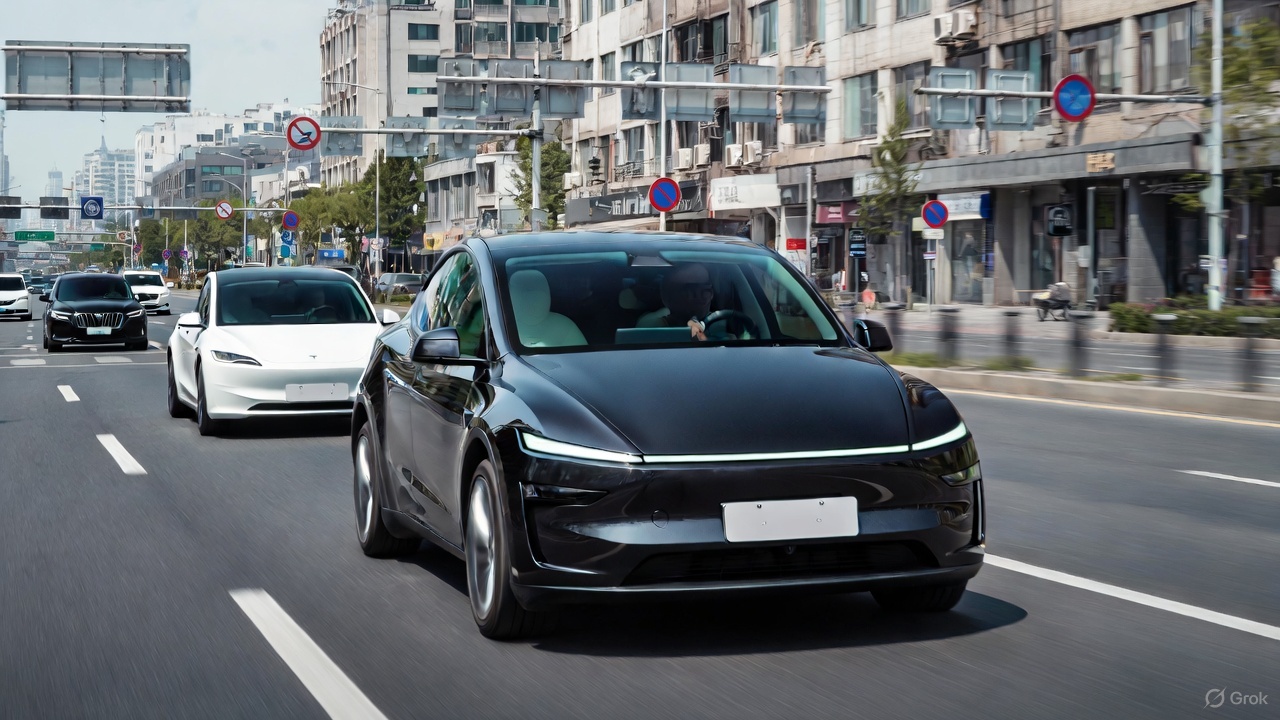
Tesla’s Model 3 and Model Y once again led the field in a new real-world energy-consumption test conducted by China’s Autohome, outperforming numerous rival electric vehicles in controlled conditions.
The results, which placed both Teslas in the top two spots, prompted Xiaomi CEO Lei Jun to acknowledge Tesla’s efficiency advantage while noting that his company’s vehicles will continue refining its own models to close the gap.
Tesla secures top efficiency results
Autohome’s evaluation placed all vehicles under identical conditions, such as a full 375-kg load, cabin temperature fixed at 24°C on automatic climate control, and a steady cruising speed of 120 km/h. In this environment, the Tesla Model 3 posted 20.8 kWh/100 km while the Model Y followed closely at 21.8 kWh/100 km, as noted in a Sina News report.
These figures positioned Tesla’s vehicles firmly at the top of the ranking and highlighted their continued leadership in long-range efficiency. The test also highlighted how drivetrain optimization, software management, and aerodynamic profiles remain key differentiators in high-speed, cold-weather scenarios where many electric cars struggle to maintain low consumption.
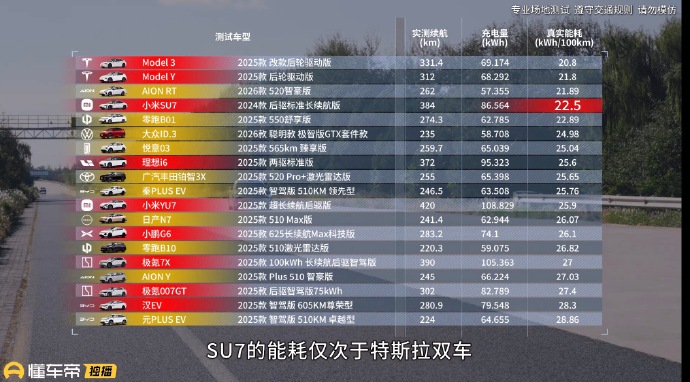
Xiaomi’s Lei Jun pledges to continue learning from Tesla
Following the results, Xiaomi CEO Lei Jun noted that the Xiaomi SU7 actually performed well overall but naturally consumed more energy due to its larger C-segment footprint and higher specification. He reiterated that factors such as size and weight contributed to the difference in real-world consumption compared to Tesla. Still, the executive noted that Xiaomi will continue to learn from the veteran EV maker.
“The Xiaomi SU7’s energy consumption performance is also very good; you can take a closer look. The fact that its test results are weaker than Tesla’s is partly due to objective reasons: the Xiaomi SU7 is a C-segment car, larger and with higher specifications, making it heavier and naturally increasing energy consumption. Of course, we will continue to learn from Tesla and further optimize its energy consumption performance!” Lei Jun wrote in a post on Weibo.
Lei Jun has repeatedly described Tesla as the global benchmark for EV efficiency, previously stating that Xiaomi may require three to five years to match its leadership. He has also been very supportive of FSD, even testing the system in the United States.
News
Tesla Model 3 and Model Y named top car buys in Norway
Despite growing competition from European and Korean brands, both models stood out for their balance of price, performance, and everyday usability.
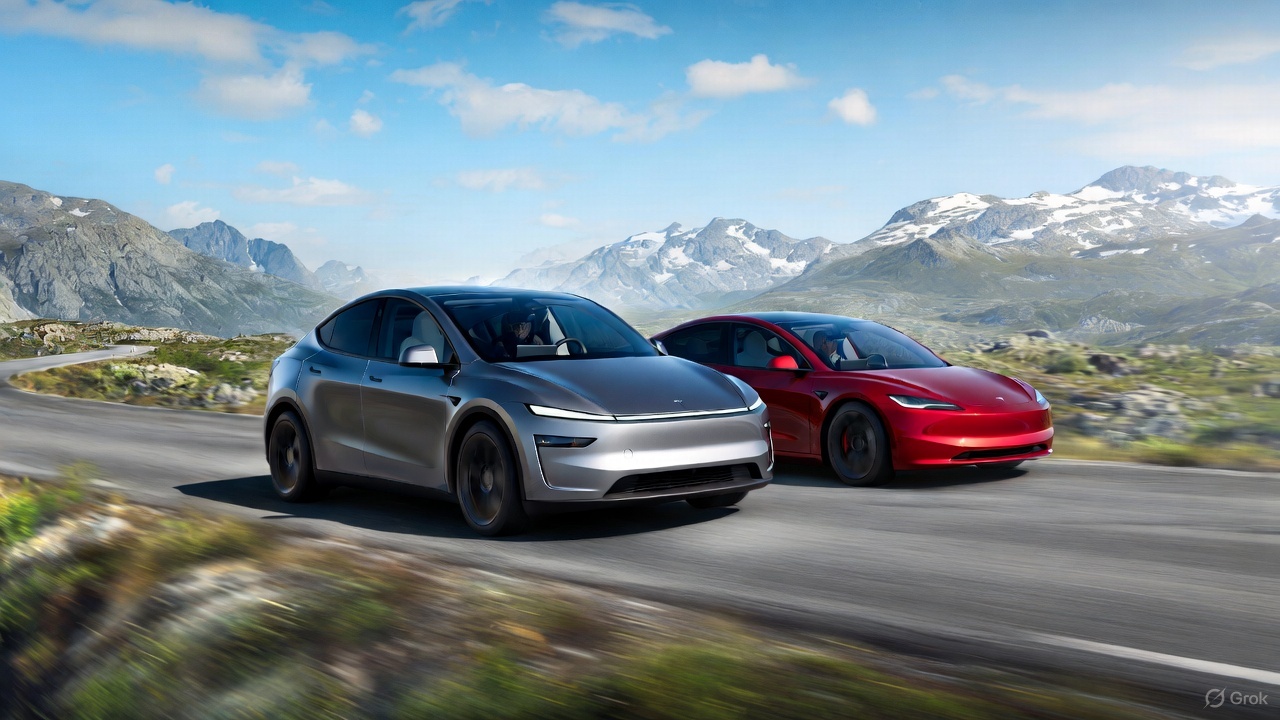
Norway’s annual roundup of the best car purchases featured Tesla’s two main sellers this year, with the Model 3 and Model Y securing top positions in their respective segments.
Despite growing competition from European and Korean brands, both models stood out for their balance of price, performance, and everyday usability. The verdict comes as electric vehicle adoption remained above 95% of new vehicle sales in the country.
Tesla Model 3 strengthens its value position
Among compact EVs, the Tesla Model 3 maintained its position as the best overall buy thanks to its strong blend of performance, efficiency, and updated features. Reviewers noted that every trim offered compelling value, especially with the all-electric sedan’s improved cabin ergonomics and the return of the turn-signal stalk, which was one of the few previous complaints among drivers.
The Model 3’s mix of long-range capability, low operating costs, and responsive handling has continued to set the benchmark for compact EVs in Norway. While competitors from Hyundai, Volkswagen, and Peugeot have narrowed the gap, Tesla’s price-to-capability ratio has remained difficult to beat in this segment, Motor.no reported.
“The Model 3 clearly offers the best value for money in the compact class, no matter which version you choose. Now it also gets the turn signal lever back. This eliminates one of the few flaws in a driving environment that many believe is the best on the market,” the publication wrote.
Tesla Model Y claims its crown
The Tesla Model Y emerged as Norway’s top family-car purchase this year. The latest refresh introduced improvements in ride quality, styling, and interior materials, allowing the Model Y to deliver a more premium driving experience without a substantial price increase.
Reviewers praised its spacious cabin, strong safety profile, and practical range, all of which reinforced its appeal for families needing an all-purpose electric crossover. The Model Y remains especially notable given its continued popularity in Norway even as Tesla faces declining sales in other global markets.
“The Model Y is back as the winner in the family class. The upgrade in the new year was even more extensive than expected. It is a slightly more elegant and significantly more comfortable Model Y that solidifies its position as Norway’s best car purchase in the most important class,” the Norwegian motoring publication noted.








